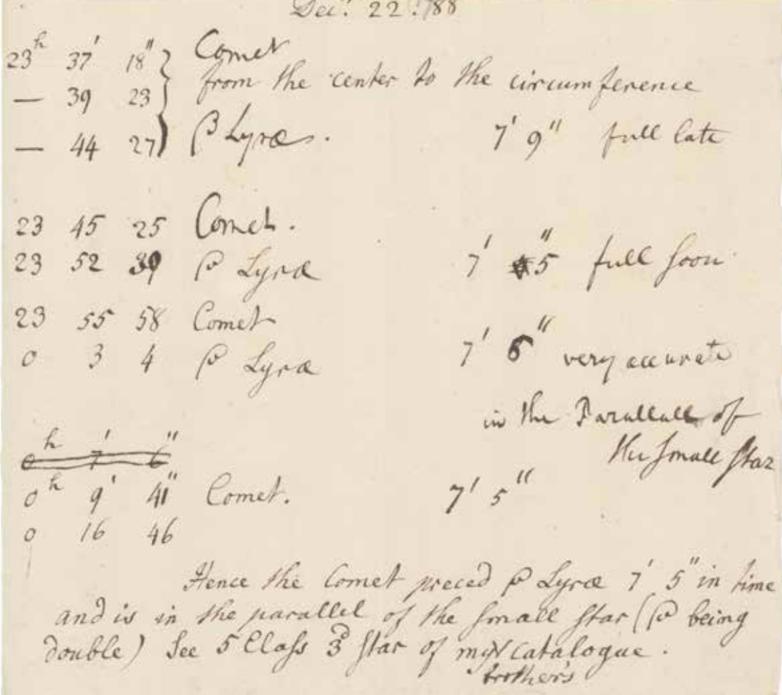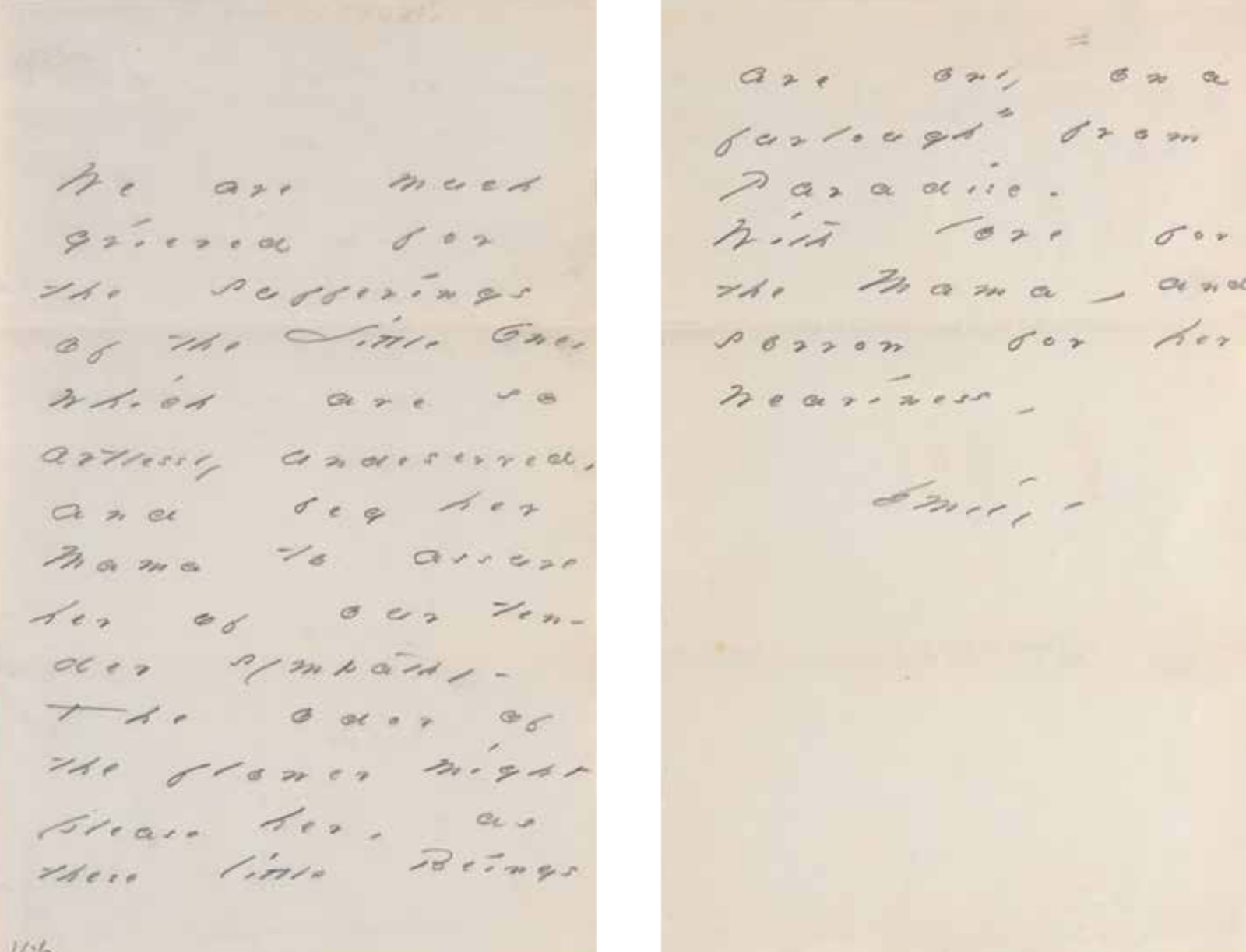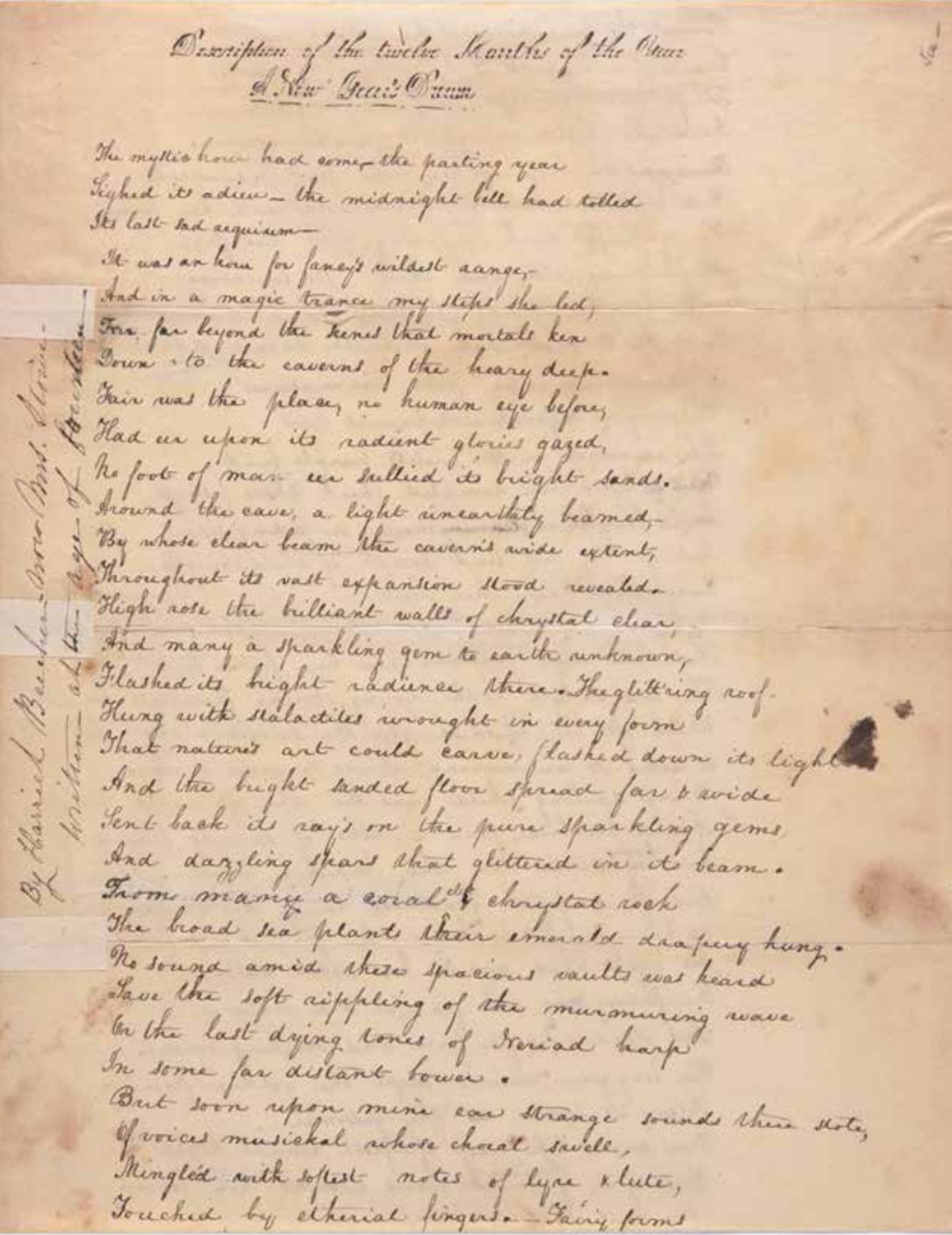* Emma Frances Johnston, her personal archive of approximately 350 photographs. This tremendous discovery is the extensive photographic archive of the little-known Victorian photographer Emma Frances Johnston. This is aparently the earliest comprehensive archive of a female photographer in private hands. Beginning around 1858, Johnston made this wonderful series of portraits of her friends and extended family comprising the intellectual and social world of nineteenth- century Hampstead in London
* Emily Dickinson, autograph letter signed “Emily” to her neighbor Adelaide Spencer (Mrs. Henry) Hills. In this touching, poetic letter, Emily Dickinson consoles her friend and neighbor Adelaide Spencer Hills. Likely referring to Adelaide’s daughter Carrie (b. 1876) or Susan (b. 1882), Dickinson writes, “We are much grieved for the sufferings of the little one, which are so artlessly undeserved, and beg her mama to assure her of our tender sympathy. The odor of the flower might please her, as these little beings are only ‘on a furlough’ from Paradise. With love for the mama, and sorrow for her weariness, Emily.
* Harriet Beecher Stowe, autograph manuscript signed, “Description of the twelve Months of the Year, A New Year’s Dream. This is evidently the earliest extant literary manuscript by Harriet Beecher Stowe, one of the most influential American authors of the nineteenth century. Stowe wrote this 144-line manuscript when she was just fourteen, around 1825. At that time she was in her second year as a student at her sister Catharine’s Hartford Female Seminary. In the year she arrived, the school started a student literary magazine that she helped to edit. She preserved this manuscript among her personal papers for years. Some time after 1836, when at age 25 she married Calvin Stowe, she wrote in its left margin, “By Harriet Beecher, now Mrs. Stowe - written at the age of fourteen.”




















